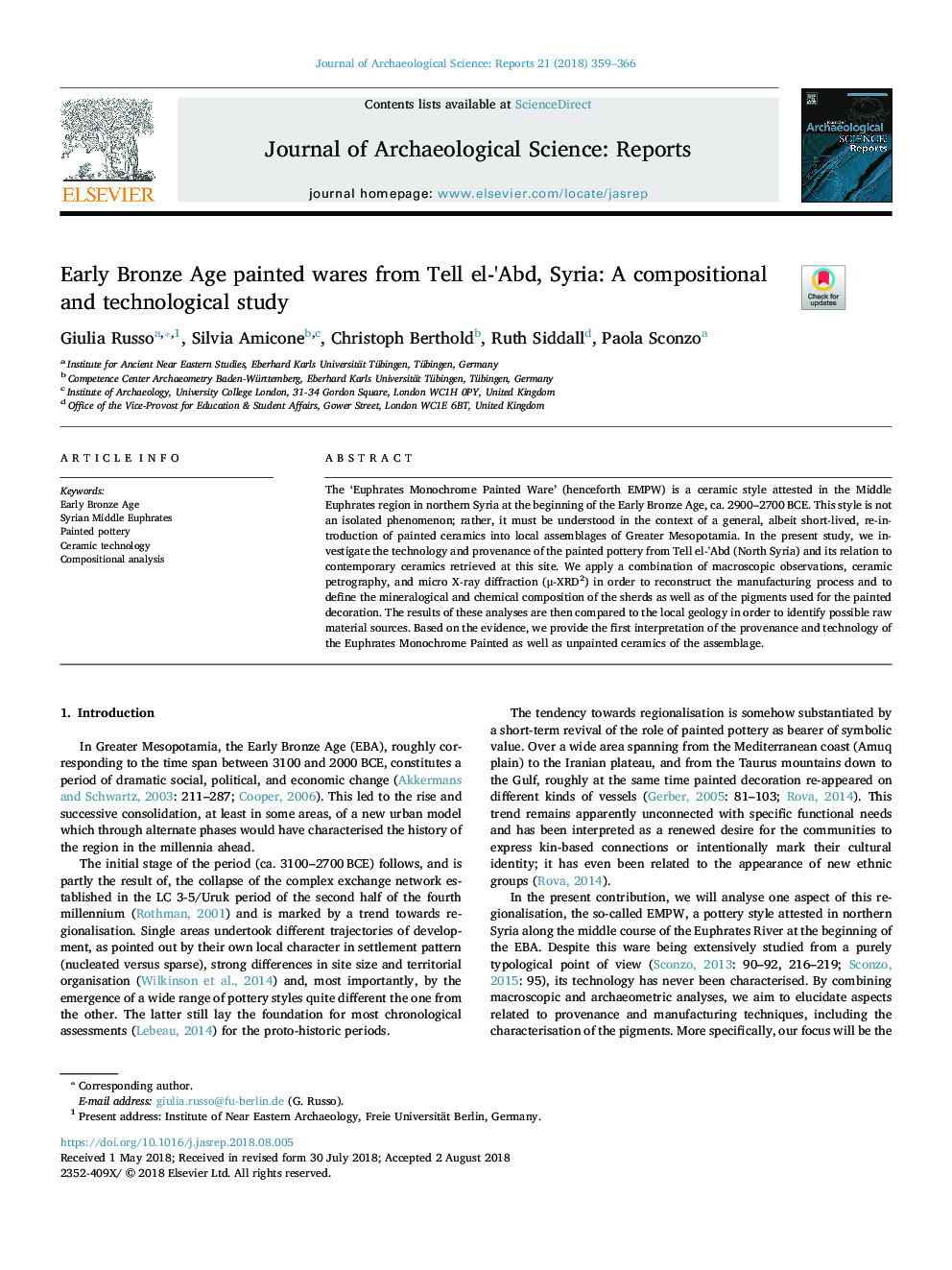| Article ID | Journal | Published Year | Pages | File Type |
|---|---|---|---|---|
| 7444233 | Journal of Archaeological Science: Reports | 2018 | 8 Pages |
Abstract
The 'Euphrates Monochrome Painted Ware' (henceforth EMPW) is a ceramic style attested in the Middle Euphrates region in northern Syria at the beginning of the Early Bronze Age, ca. 2900-2700â¯BCE. This style is not an isolated phenomenon; rather, it must be understood in the context of a general, albeit short-lived, re-introduction of painted ceramics into local assemblages of Greater Mesopotamia. In the present study, we investigate the technology and provenance of the painted pottery from Tell el-'Abd (North Syria) and its relation to contemporary ceramics retrieved at this site. We apply a combination of macroscopic observations, ceramic petrography, and micro X-ray diffraction (μ-XRD2) in order to reconstruct the manufacturing process and to define the mineralogical and chemical composition of the sherds as well as of the pigments used for the painted decoration. The results of these analyses are then compared to the local geology in order to identify possible raw material sources. Based on the evidence, we provide the first interpretation of the provenance and technology of the Euphrates Monochrome Painted as well as unpainted ceramics of the assemblage.
Related Topics
Social Sciences and Humanities
Arts and Humanities
History
Authors
Giulia Russo, Silvia Amicone, Christoph Berthold, Ruth Siddall, Paola Sconzo,
